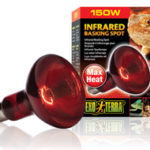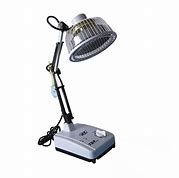Last Updated on 6 months by Francis
If you’re considering purchasing an infrared fireplace, you may be wondering how much electricity it will consume. After all, no one wants to be hit with a high electricity bill! In this article, we’ll explore the energy consumption of infrared fireplaces and help you understand how they work. We’ll also provide tips for reducing electricity consumption and calculating operating costs so that you can make an informed decision.
Contents
Key Takeaways:
- Infrared fireplaces consume electricity, but they are generally more energy-efficient than traditional fireplaces.
- Understanding how infrared fireplaces produce heat and adjusting settings can help reduce electricity consumption.
- Calculating operating costs and identifying energy-efficient models can help homeowners make informed purchasing decisions.
Understanding Infrared Fireplaces
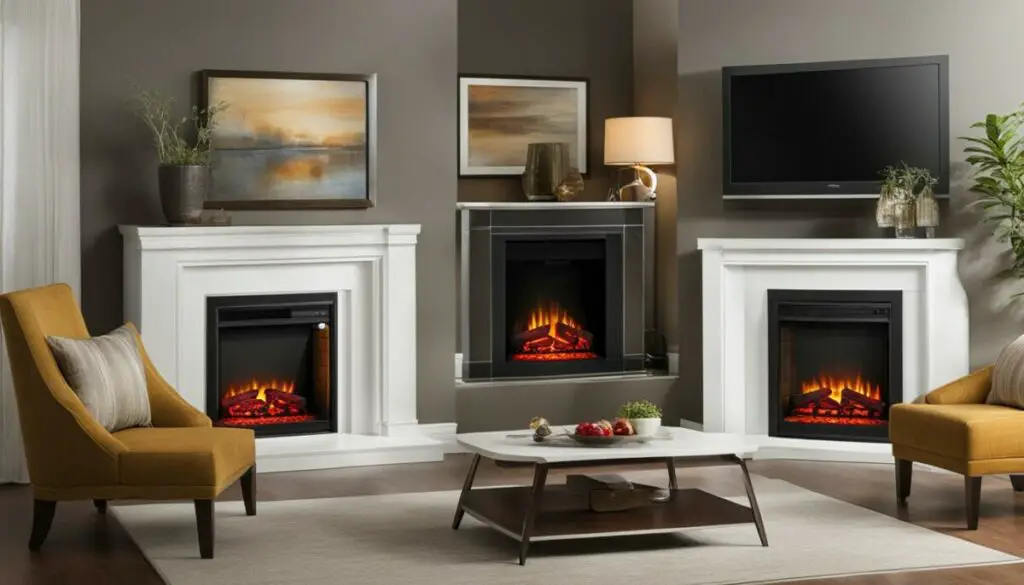
Before we dive into the specifics of infrared fireplace electricity usage and operating costs, it’s essential to understand what infrared fireplaces are and how they operate.
Infrared fireplaces are electric heating units that use infrared technology to produce heat. Unlike traditional fireplaces, which rely on combustion to generate heat, infrared fireplaces use electricity to heat up an infrared heating element. This element emits infrared radiation, which heats up objects in its path, creating a warm and cozy ambiance.
While traditional fireplaces are known for their aesthetic appeal, they are not very energy-efficient. They require regular cleaning and maintenance, and the fuel used in wood-burning fireplaces can be quite expensive. In contrast, infrared fireplaces are easy to install and require minimal maintenance, making them a practical and cost-effective heating solution for homes.
When it comes to operating costs, infrared fireplaces are generally more affordable than traditional fireplaces. They consume less electricity and are more energy-efficient, which translates into lower utility bills for homeowners. Some infrared fireplace models also come with energy-saving features, such as timers and thermostats, which allow users to control their energy consumption and lower their operating costs even further.
To get a better sense of how much electricity infrared fireplaces consume, let’s take a look at some operating cost estimates. According to Energy.gov, electric fireplaces, including infrared models, typically cost between 7 and 13 cents per hour to operate. This translates to an annual operating cost between $50 and $100, depending on usage. In comparison, traditional wood-burning fireplaces can cost up to $200 or more per year to operate.
In summary, infrared fireplaces are a modern, energy-efficient heating solution for homes. They are easy to install, require minimal maintenance, and consume less electricity compared to traditional fireplaces. By understanding how they work and implementing energy-saving practices, homeowners can enjoy the warmth and ambiance of an infrared fireplace while minimizing their operating costs.
How Do Infrared Fireplaces Produce Heat?
Energy-efficient infrared fireplaces use electricity to produce heat. Unlike traditional fireplaces, which release most of the heat up the chimney, infrared fireplaces use advanced heating technologies to convert electricity into heat efficiently. These heating technologies include:
- Quartz Heating: These heaters use quartz tubes to produce infrared radiation, which directly heats objects and people in the room, rather than the air.
- Ceramic Heating: These heaters use ceramic plates to produce heat. The ceramic plates absorb electricity and produce infrared radiation, which is emitted in the form of heat.
- Metal Coil Heating: These heaters use a metal coil to produce a large amount of heat quickly. The coil is heated by electricity and emits infrared radiation to produce heat.
Infrared fireplaces also have reflectors that direct the heat towards the room, making them more energy-efficient than traditional fireplaces.
The electricity consumption of infrared heating units depends on various factors, such as the size of the room, insulation, and the desired temperature. However, compared to traditional fireplaces, which can consume up to 25,000 watts of power, infrared fireplaces typically use between 750 to 1500 watts of power, making them an energy-efficient heating option for many households.
Comparing Energy Usage: Infrared Fireplaces vs. Traditional Fireplaces

When it comes to the power usage of fireplaces, there is a vast difference between infrared fireplaces’ consumption and traditional fireplaces. Traditional fireplaces require a significant amount of power to create heat, while infrared fireplaces utilize a different mechanism that is much more energy-efficient.
Infrared fireplaces can provide up to 50,000 hours of heat while using the same electricity as a coffee maker.
To put this into perspective, a traditional wood-burning fireplace can consume up to 25% of your home’s energy. The energy required for a wood-burning fireplace to heat a room is exponentially higher than that of an infrared fireplace.
Another factor to consider is the cost of the fuel source. For traditional wood-burning fireplaces, the cost of firewood varies depending on the region, but it’s generally more expensive than electricity.
The table below provides a side-by-side comparison of the power usage and operating costs between traditional fireplaces and infrared fireplaces:
| Traditional Fireplace | Infrared Fireplace | |
|---|---|---|
| Average Power Usage (Watts) | 3000-5000 | 1000-1500 |
| Average Operating Cost per Hour | $0.30-$0.50 | $0.10-$0.15 |
| Fuel Source | Wood | Electricity |
As the table illustrates, infrared fireplaces are significantly more energy-efficient and cost-effective than traditional fireplaces. With lower power usage and operating costs, they also have a more eco-friendly impact.
Factors Affecting Electricity Consumption in Infrared Fireplaces
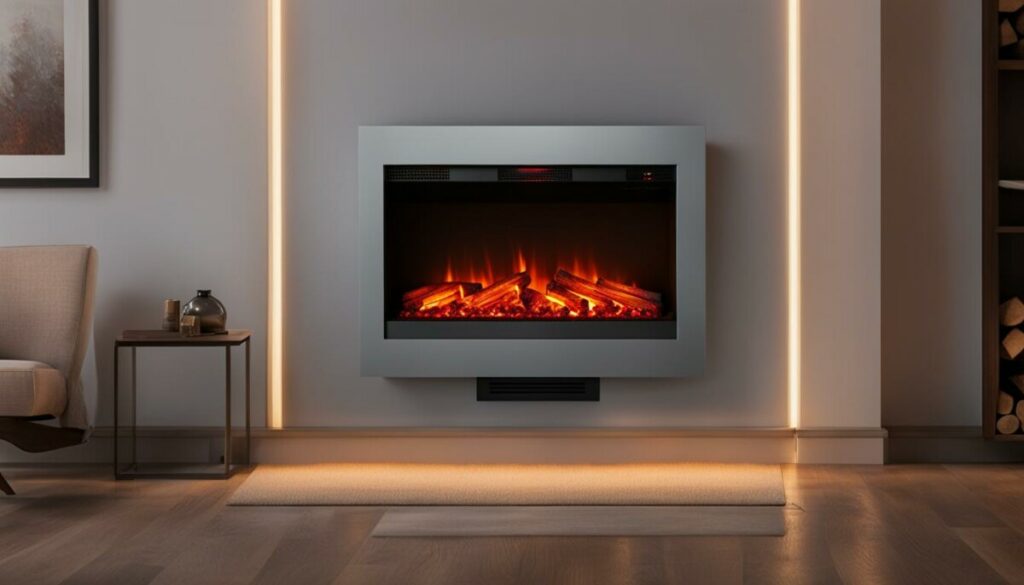
While infrared fireplaces are generally more energy-efficient than traditional fireplaces, there are several factors that can influence their electricity consumption. By understanding these factors, homeowners can optimize their energy efficiency and reduce their operating costs.
Temperature Settings
The temperature settings on your infrared fireplace can significantly impact its energy usage. While it may be tempting to crank up the heat, doing so will consume more electricity and increase your operating costs. To minimize electricity consumption, try adjusting your temperature settings to the lowest comfortable level.
Room Size and Insulation
The size and insulation of your room can also affect the amount of electricity your infrared fireplace consumes. If you have a larger room, your infrared fireplace will need to work harder to heat the space, resulting in higher electricity consumption. Similarly, if your home is poorly insulated, heat will escape more easily, causing your infrared fireplace to consume more electricity. To minimize electricity consumption, consider using your infrared fireplace in smaller, well-insulated rooms.
Frequency of Use
The frequency of use also plays a role in the electricity consumption of infrared fireplaces. If you use your infrared fireplace frequently, it will consume more electricity, resulting in higher operating costs. To minimize electricity consumption, try limiting the use of your infrared fireplace to when it is needed most.
Placement of Fireplace
The placement of your infrared fireplace can also impact its energy efficiency. If your fireplace is located in an area that receives a lot of sunlight or is near other sources of heat, such as a radiator, it may consume less electricity to produce the same amount of heat. To minimize electricity consumption, consider strategically placing your infrared fireplace in the room.
By considering these factors and implementing energy-saving practices, homeowners can enjoy the warmth and ambiance of an infrared fireplace while minimizing their electricity consumption and operating costs.
Understanding Infrared Fireplace Settings and Controls
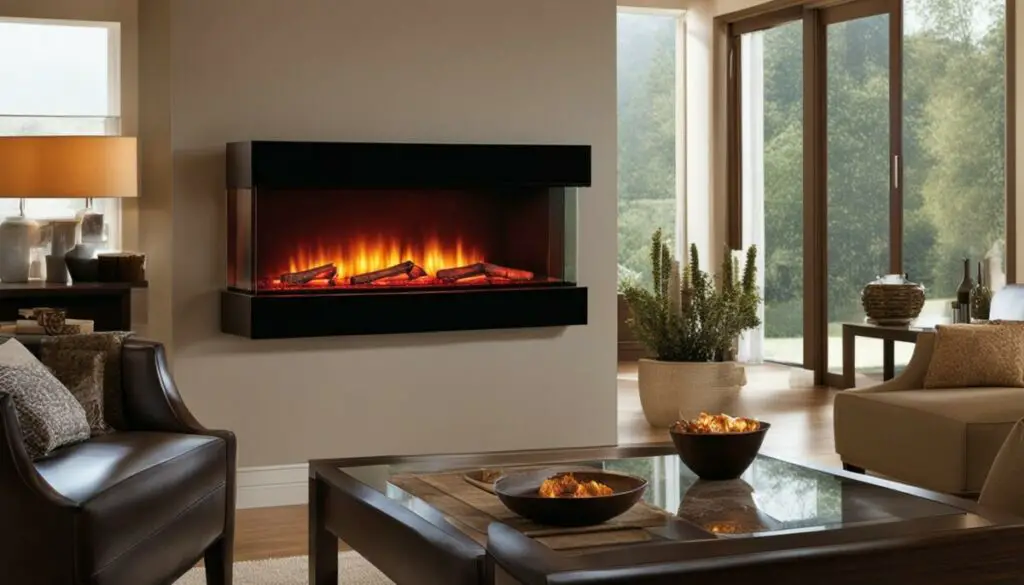
Adjusting the settings and controls of your infrared fireplace can have a significant impact on energy consumption. By understanding how to use these features, you can maximize energy savings while still enjoying the warmth and ambiance of your fireplace.
One important setting to consider is the temperature control. Many infrared fireplaces come with a thermostat that allows you to set a specific temperature. This means that the fireplace will only use as much electricity as needed to maintain that temperature, rather than continually pumping out heat.
Another feature to pay attention to is the timer setting. This allows you to set a specific duration for your fireplace to operate. For example, you can set it to turn off after a few hours, ensuring that it doesn’t run unnecessarily and waste energy.
Additionally, some infrared fireplaces come with a fan speed control. This setting determines how quickly the fireplace blows warm air into the room. By adjusting the fan speed, you can optimize warmth distribution while still conserving energy.
Finally, many modern infrared fireplaces come with a remote control for easy adjustment of temperature, timer, and other settings. This can be a convenient way to manage your fireplace from across the room.
Energy-Saving Tips for Infrared Fireplaces
Below are some tips for using your infrared fireplace in the most energy-efficient way possible:
- Set the temperature to the lowest possible level that still provides adequate warmth
- Use the timer setting to turn off your fireplace when you’re not home or when you’re sleeping
- Keep the room well-insulated to minimize heat loss
- Dust the fireplace and vents regularly to ensure optimal performance
- Consider purchasing an energy-efficient model if you’re in the market for a new infrared fireplace
By following these tips and taking advantage of the various settings and controls available, you can reduce your energy consumption and save money on operating costs.
Tips for Reducing Electricity Consumption of Infrared Fireplaces

If you’re looking to save energy and reduce operating costs, here are some tips for maximizing the energy efficiency of your infrared fireplace:
1. Keep the Room Insulated
Insulating your room properly can reduce the amount of energy needed to heat it. Make sure doors and windows are sealed, and consider adding insulation to walls and ceilings to prevent heat from escaping.
2. Use the Fireplace in Moderation
Avoid leaving your infrared fireplace on for extended periods when not needed. Only use it when you’re in the room and turn it off when you leave.
3. Clean the Fireplace Regularly
Dust and debris can accumulate on the heating element and reduce the efficiency of your infrared fireplace. Regularly cleaning the unit will ensure it operates at peak performance, minimizing energy consumption.
4. Choose Energy-Saving Settings
Most infrared fireplaces offer multiple settings and controls that allow you to adjust the temperature and heating level. Choosing the energy-saving settings can significantly reduce electricity consumption while still providing adequate warmth and ambiance.
5. Install a Programmable Thermostat
A programmable thermostat allows you to set specific temperatures for different times of the day. This means you can lower the temperature when you’re not home, reducing electricity consumption and operating costs.
“By following these tips, homeowners can significantly reduce the electricity consumption of their infrared fireplaces, all while enjoying the warmth and comfort they provide.”
Calculating the Operating Costs of Infrared Fireplaces

When evaluating the electricity consumption of infrared fireplaces, it is crucial to consider the operating costs. Calculating the operating costs is relatively straightforward and involves two steps: determining the electricity cost and estimating the daily usage of the fireplace.
The electricity cost varies depending on the region and utility provider. Typically, residential electricity costs range from 8 to 20 cents per kilowatt-hour (kWh). To determine the electricity cost, multiply the cost per kWh by the power consumption of the fireplace in kW. For instance, if the cost of electricity is 12 cents per kWh and the fireplace consumes 1.5 kW per hour, the electricity cost per hour would be 18 cents.
To estimate the daily usage of the fireplace, consider how often and how long you use the unit. For instance, if you use the fireplace for six hours each day, the daily usage would be six hours. Multiply the electricity cost per hour by the daily usage to determine the daily operating cost. Using the previous example, the daily operating cost would be $1.08.
It is important to note that the operating costs can vary based on several factors, such as the size of the room, ambient temperature, and insulation. However, calculating the operating costs provides a baseline estimate for homeowners to budget for their energy bills and make more informed purchase decisions.
Energy Efficiency Ratings and Standards for Infrared Fireplaces
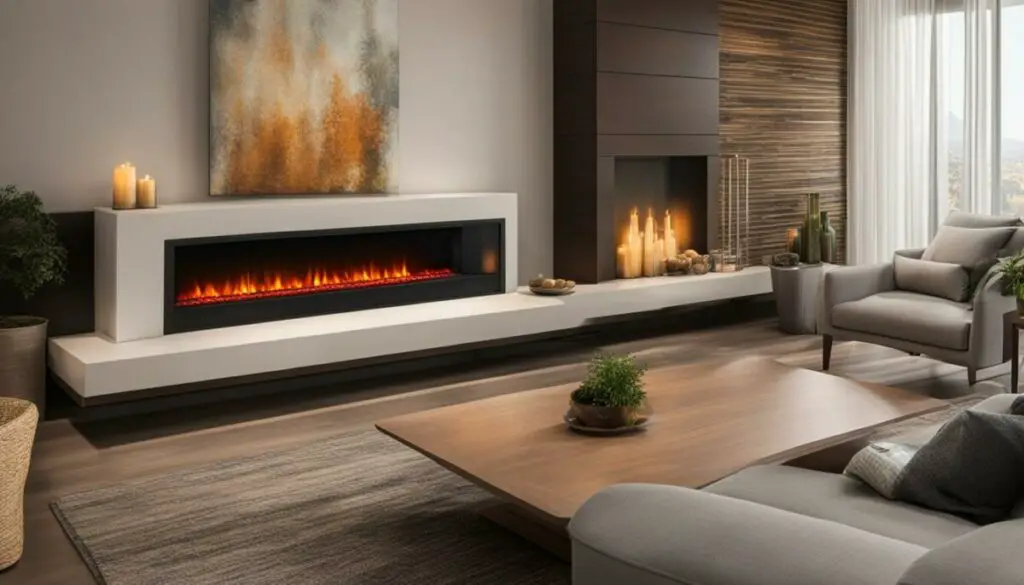
Energy-efficient infrared fireplaces are designed to use less electricity while producing the same amount of heat as less efficient models. To help consumers identify energy-efficient options, the US Environmental Protection Agency (EPA) has established the ENERGY STAR® program.
ENERGY STAR® certified infrared fireplaces meet strict energy efficiency guidelines set by the EPA and are typically 20% more efficient than standard models. By using less electricity to produce heat, these models can help homeowners save on their energy bills while reducing their carbon footprint.
When shopping for an infrared fireplace, look for the ENERGY STAR® label or check the product’s energy efficiency rating. The higher the rating, the more energy-efficient the unit. This information is typically provided on the product’s packaging or in its user manual.
What is the ENERGY STAR® Certification?
The ENERGY STAR® certification is a government-backed program that helps consumers save money and protect the environment. Products that earn the ENERGY STAR® label are independently certified to meet strict energy efficiency guidelines set by the EPA.
In addition to infrared fireplaces, the ENERGY STAR® program certifies a wide range of products, including appliances, electronics, lighting, and HVAC systems. By choosing ENERGY STAR® certified products, homeowners can reduce their energy bills, improve their home’s comfort, and help protect the environment.
Not only does purchasing an energy-efficient infrared fireplace help save on operating costs, but it can also contribute to a more sustainable lifestyle. By minimizing electricity use, homeowners can reduce their carbon footprint and help combat climate change.
Remember to look for the ENERGY STAR® label or check the product’s energy efficiency rating when shopping for a new infrared fireplace. By choosing an energy-efficient model, you’ll not only save on your energy bills but also contribute to a cleaner, greener planet.
The Advantages and Disadvantages of Infrared Fireplaces
As with any heating unit, infrared fireplaces have their advantages and disadvantages. However, when it comes to energy efficiency, these heating units tend to outperform traditional fireplaces. Let’s take a closer look at the pros and cons of infrared fireplaces.
Advantages
- Energy Efficiency: Infrared fireplaces are known for their energy-saving capabilities, making them an eco-friendly heating option. They use less energy compared to traditional fireplaces, which helps reduce electricity consumption and lower monthly utility bills.
- Safe: Since there are no actual flames, infrared fireplaces pose fewer fire risks, making them suitable for homes with children and pets.
- Easy Installation: Infrared fireplaces typically don’t require a chimney or vent, making them easy to install anywhere in the home.
- Ambiance: Infrared fireplaces provide a warm and cozy atmosphere, enhancing the overall feel of a room.
Disadvantages
- Limited Heating Capacity: Infrared fireplaces are best suited for heating small areas and may not be sufficient for larger rooms.
- Initial Costs: While infrared fireplaces can save on energy costs in the long run, they can be more expensive to purchase and install initially.
- Noise: Some models may produce a humming noise while in operation, which can be distracting to some homeowners.
- Lack of Authenticity: Infrared fireplaces may not provide the same visual appeal and authenticity as traditional fireplaces.
Overall, the advantages of infrared fireplaces outweigh the disadvantages, particularly when it comes to energy efficiency. With proper installation and usage, infrared fireplaces can provide a sustainable and cost-effective heating option for any home.
Conclusion
After exploring the energy consumption of infrared fireplaces, we can conclude that while they do use electricity, they are generally more energy-efficient than traditional fireplaces. By understanding how infrared fireplaces work and implementing energy-saving strategies, homeowners can enjoy the warmth and ambiance of these heating units while reducing their electricity consumption and operating costs.
Energy-Saving Tips
To optimize the energy efficiency of infrared fireplaces, consider the following tips:
- Use a programmable thermostat to set the temperature and operating time of your infrared fireplace
- Clean the unit’s heating element regularly to ensure optimal performance
- Seal the area around the fireplace to prevent heat loss
- Use a fan to distribute the heat more evenly throughout the room
- Consider using the fireplace to supplement your home’s primary heating system, rather than replacing it entirely
Energy Efficiency Ratings
When selecting an infrared fireplace, be sure to consider its energy efficiency rating. Look for models that have been certified by reputable organizations, such as ENERGY STAR, which indicate that the unit has been tested and meets certain energy efficiency standards. By choosing an energy-efficient fireplace, you can further reduce your electricity consumption and operating costs.
Final Thoughts
While infrared fireplaces do use electricity, they are a more energy-efficient heating option compared to traditional fireplaces. By understanding their energy usage and implementing energy-saving practices, homeowners can enjoy the warmth and ambiance of an infrared fireplace without worrying about high electricity bills. Remember to consider the fireplace’s energy efficiency rating and to follow the energy-saving tips we’ve provided to minimize your electricity consumption. Stay warm and cozy this winter!
FAQ
Do infrared fireplaces use a lot of electricity?
Infrared fireplaces are generally more energy-efficient compared to traditional fireplaces. While they do consume electricity, their energy usage is considered to be lower.
What are infrared fireplaces and how do they work?
Infrared fireplaces are heating units that use infrared technology to produce heat. They emit infrared radiation that directly heats objects and people in the room, creating a cozy and comfortable atmosphere. They operate by using electricity to power the infrared heating elements.
How do infrared fireplaces produce heat energy?
Infrared fireplaces use electricity to power the infrared heating elements, which emit infrared radiation. This radiation directly heats objects and people in the room, providing warmth and comfort.
What is the difference in energy usage between infrared fireplaces and traditional fireplaces?
Infrared fireplaces generally consume less electricity compared to traditional fireplaces. Traditional fireplaces require burning fuel, such as wood or gas, which can be less energy-efficient and more costly in the long run.
What factors can affect the electricity consumption of infrared fireplaces?
Several factors can influence the electricity consumption of infrared fireplaces. These include the size of the room, insulation, desired temperature, usage patterns, and the efficiency of the fireplace itself.
How can I optimize the energy efficiency of my infrared fireplace?
To maximize energy efficiency, you can adjust the settings and controls of your infrared fireplace. Lowering the temperature, using timers or thermostats, and ensuring proper insulation in the room can help reduce electricity consumption.
What are some tips for reducing electricity consumption of infrared fireplaces?
To lower electricity consumption, consider using your infrared fireplace in conjunction with other heating sources, such as central heating. You can also limit usage to specific areas of the house and ensure the fireplace is properly maintained and cleaned.
How can I calculate the operating costs of my infrared fireplace?
To calculate the operating costs, you need to consider the electricity rate in your area and the wattage of your infrared fireplace. Multiply the wattage by the hours of usage and the electricity rate to estimate the operating costs per hour, day, or month.
How can I identify energy-efficient infrared fireplaces?
Look for energy efficiency ratings and standards, such as ENERGY STAR certification, when choosing an infrared fireplace. These ratings indicate that the fireplace meets specific energy-saving criteria and can help you select a more efficient model.
What are the advantages and disadvantages of infrared fireplaces?
Infrared fireplaces offer several advantages, including energy efficiency, targeted heating, and ease of installation. However, they may have limitations in heating larger spaces and may not provide the same ambiance as traditional fireplaces.


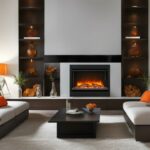

.jpg)


